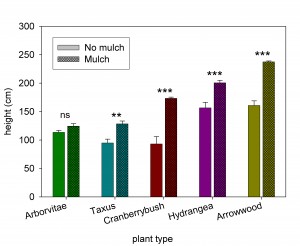An article was published earlier this week comparing the nutritional content of milk from organically raised cows to that from conventional dairies. The principle finding in this report is that “organic milk contained 25% less ω-6 fatty acids and 62% more ω-3 fatty acids than conventional milk, yielding a 2.5-fold higher ω-6/ω-3 ratio in conventional compared to organic milk (5.77 vs. 2.28).” (ω-3 fatty acids are considered to be “healthy” and you’ve probably heard of them in association with fish consumption.)
Of course, the popular press has had a field day with this, with such headlines as “Study finds organic milk is more nutritious.” This of course is nonsense, because the researchers didn’t study the health effects on people consuming the milk. But for argument’s sake, let’s assume this might be true and move on to the study itself.
What researchers actually found was that cows who feed primarily on pasture grasses and other forages (the “organic” cows) had elevated ω-3 fatty acids compared to those receiving a primarily grain-based diet (the “conventional” cows). This isn’t new information – other studies (such as this one) have consistently demonstrated this.

The problem with this newest paper is the inaccurate terminology used to describe the study. It really has nothing to do with whether the cows are raised organically or conventionally – it has to do with what they eat. A better experimental design would have included multiple comparisons among “organic” cows (who by default are grass-fed), “conventional” cows that are fed a grain diet (typical with large operations), and “conventional” cows that are pasture-raised (common with smaller farms that don’t want to jump through the organic certification hoops). I’m betting that the milk from this last group of cows wouldn’t be much different from the “organic” cows.
The upshot of using such imprecise terminology is that the message is lost amid the furor of the ongoing organic vs. conventional agriculture battle. Readers erroneously jump to a value-based conclusion – i.e., organic is “better” than conventional.
In my opinion, there’s no excuse for this. The experts who reviewed this article should have pointed out the loaded language and insisted on a change in terminology. (You might be interested to follow the comments on this article, one of which alludes to misleading terminology.)




